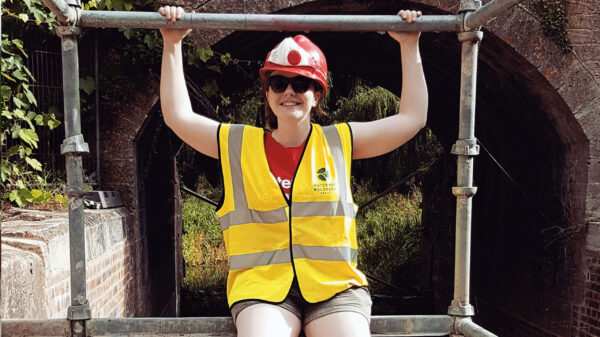Ali Bottomley
Runs the WRG Training Weekend
I currently work as a primary school teacher in the North East. Just like in canal restoration, there is never a dull day! When I’m not at work, I enjoy volunteering. I first discovered Waterway Recovery Group when I was 16. I was looking for an organisation that I could complete my Duke of Edinburgh residential stay with, and it was a choice between cathedral camps and canals.
The canals won! As a family, we’d always been heavily involved in sailing and kayaking, and we had been on a number of daytrips along the Kennet & Avon.
I’ve always loved the water and definitely feel more at home on it than on land. I completed a week’s volunteering at a trail-boat rally at Glasson Dock in 1989, where I met some very unique characters who left a lasting impression.
One of these new friends was heavily involved with the logistics side of WRG. He was very keen to promote a more professional image of volunteering and was passionate about training volunteers to drive and use the vehicles and plant (which are regularly used on sites) safely and responsibly.
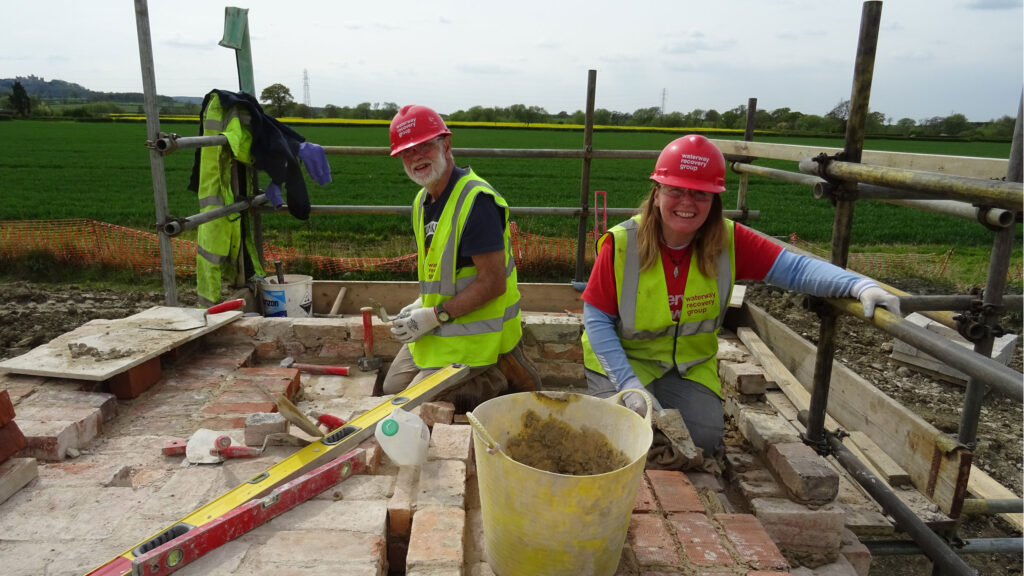
The first training event
The first training ‘event’ we organised was a very humble trailer training exercise and from there it evolved into something far bigger, taking place over bank holiday weekends and even including sponsors at one point! Although there’s always some element of training on the camps themselves, the benefit of having a dedicated weekend for it is that we can upskill large numbers of volunteers without impacting on often urgent timescales on projects during the summer.
My role is really to coordinate the instructors and volunteers. A whole weekend of training sessions are timetabled to teach anything from dumper driving and using 360 excavators to bricklaying and scaffolding. Depending on the level of skill required, we sometimes bring in outside professional training, but the majority of sessions are delivered by a set of wonderful volunteers who have become WRG instructors by virtue of having gained significant experience on our sites. Without them, the weekend just wouldn’t be possible.
This year marks 25 years since the first event, and in that time we’ve probably trained quite a few hundred WRGies and local society members. When I first became involved with WRG, there was no shortage of women. Many of the girls I met when I was 16 are still some of my closest friends 32 years on. With regards to training, however, there’s much less female involvement. This is a real shame as my experience of learning to drive plant and vehicles was extremely positive and is one of the things I love most about working on the canals.
Getting more women involved
We would love more women to get involved and redress the gender imbalance. I defy anyone to complete an excavator training session without a Cheshire cat smile on their face! It’s a brilliant opportunity to learn something different in a wonderfully welcoming environment. The great thing about WRG (and this was one of the reasons I became so involved in the first place) is that the majority of volunteers ignore gender stereotypes. Everyone is encouraged to learn and become involved in any task with which they are comfortable. As a young, female volunteer, certainly in the group of people I was ‘digging’ with, I never felt that I was overlooked because I was a woman. In fact, I was positively encouraged to give everything a go. By the time I turned 21, I was happily driving all vehicles and operating just about every piece of plant available on site.
WRG has some legendary characters, many of whom are, or were, women with a solid layer of strength running through their core. They taught me to have a voice, they taught me to never be afraid to have a go, and they taught me that you will find kindness if you look in the right places.
Jess Leighton
WRG volunteer and Waterway Legacy Leadership Programme participant
I’m 26 and work as a junior doctor in the North East. Like Alison, I stumbled across the Waterway Recovery Group website while completing my Duke of Edinburgh Award and, thinking that it sounded a bit different, I signed up. My dad drove me down to Chesterfield for the camp and I didn’t really know what to expect. But I threw myself into the week and had a really incredible time. Everyone was so friendly and encouraging, I would have stayed for another week if I didn’t have my Gold expedition a few days later!
After a few years of camps, I started to think about how I could contribute more to WRG. I was encouraged to get involved as a leader, but the main thing holding me back was unfamiliarity with the technical procedures and planning side. So when I saw WRG was advertising a programme to give budding leaders training in these areas and to support them in leading camps, it felt like the perfect opportunity. I applied for the programme and was over the moon to be successful.
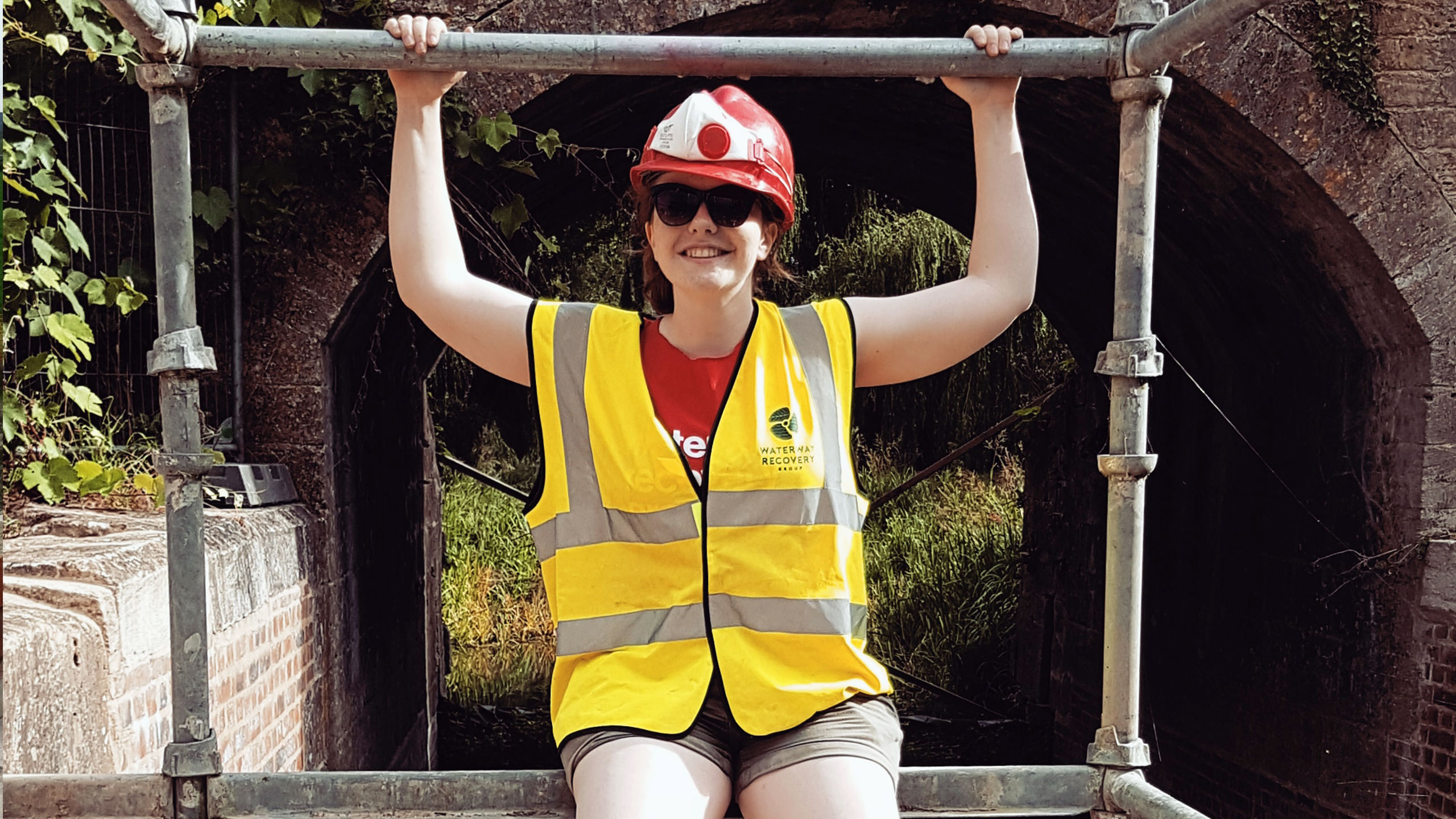
Waterway legacy leadership
The Waterway Legacy Leadership Programme is investing in 15 volunteers who will receive over £1,000 worth of training and development across 2020 and 2021. The aim is to meet the needs of the restoration sector to ensure robust and volunteer-led canal and waterways restoration projects continue.
Unfortunately, we’ve been held up a little by Covid-19, so are just settling into the training schedule for 2021. But I’m really looking forward to getting stuck in, and especially to putting it all to use on my next camp. I’ve also recently been involved with the Covid Canal Camp Working Group. It’s been really lovely to chat to the other volunteers and try to work out a safe way to return to restoration. We have devised an outline of what a WRG camp might look like in 2021 and are sharing that with volunteers to see if they would feel comfortable. It’s a huge challenge but vital that volunteers are safe.
Over the years I’ve been involved with WRG, the women I’ve met have taught me to be unapologetic about having an ‘unusual’ interest, which is a very valuable life lesson. There’s no reason why more women shouldn’t get involved. Admittedly, WRG camps are physically challenging, and it can be mentally tough too. I think it’s really important to know when to take a break or ask for help, and not to feel like you need to push yourself. You should be enjoying yourself too.
Rhiannon Smith
WRG volunteer and Waterway Legacy Leadership Programme participant
I’m 22 and I’m currently studying for a Masters in Classical Linguistics (in layman’s terms, Latin and Greek grammar) at Newnham College, Cambridge. I’ve been rowing for 11 years now so a lot of my life has been spent at, on, or occasionally in various bodies of water.
My grandmother is Audrey Smith, who was IWA chair from 1994 to 1998 and has been an amazing inspiration to me. I proudly tell people that my grandmother has her own blue plaque in Liverpool docks – like actual proper famous people do.
Waterways are a family legacy to me, and I grew up spending my summers with her and Grandpa boating around England. I don’t remember a lot of things she achieved (I wasn’t even born for some of them) but seeing pictures and hearing the stories make me wish I had – I can just imagine boating a flotilla of narrowboats down the Manchester Ship Canal and how much organisation must have gone on behind the scenes to make it happen. But the balance is starting to shift: I used to jokingly complain that I was only ever recognised as ‘Audrey Smith’s granddaughter’ but Grandma has been amused to tell me someone recently greeted her with the words: “Oh, you’re Rhiannon Smith’s grandmother!”
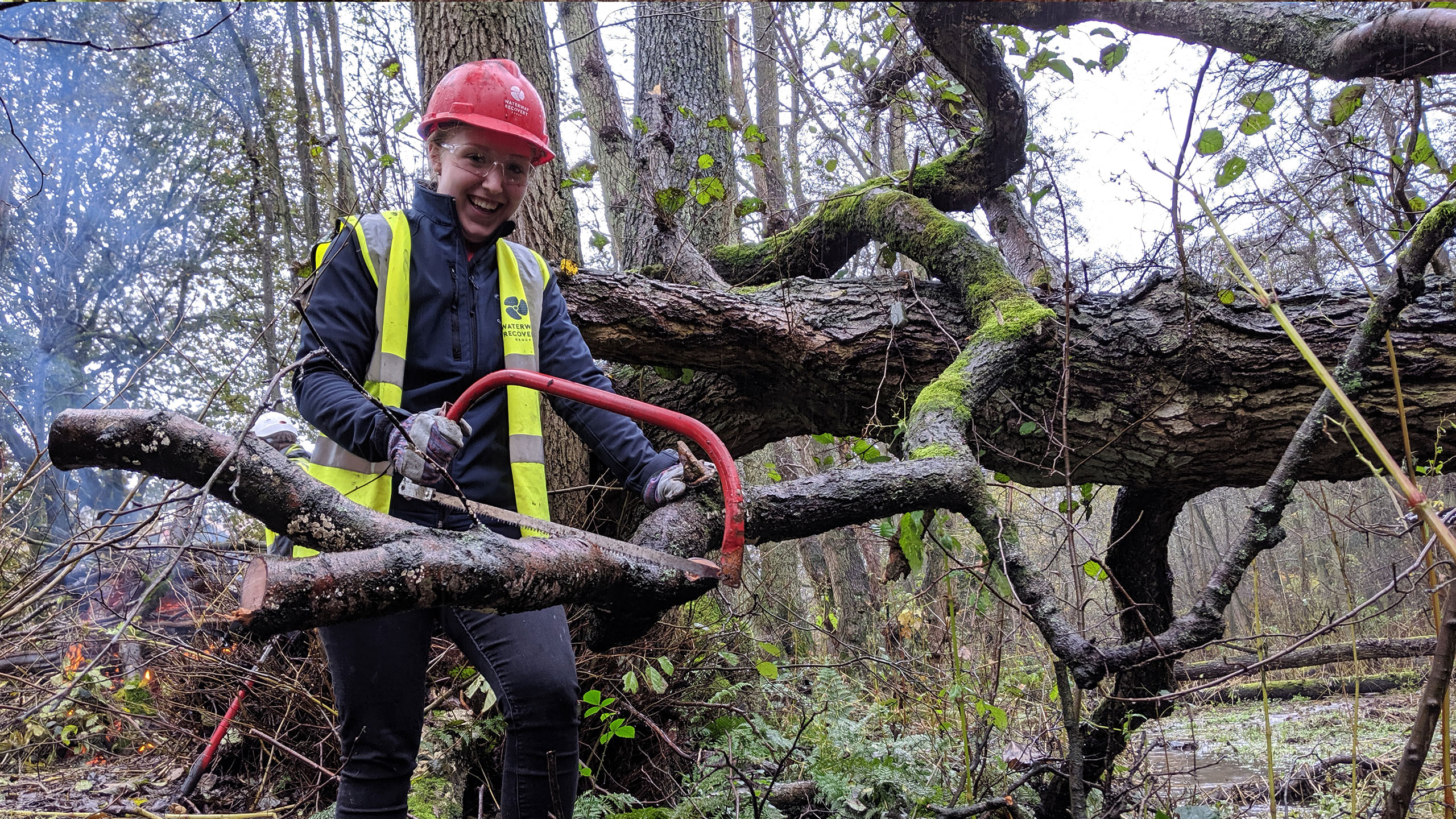
First experience with WRG & IWA
As far as we can tell, my first experience with WRG and IWA was a combined leaders training weekend and IWA committee meeting when I was three months old. From then, I spent many summers running around festival sites and generally getting underfoot. I began to properly become involved with restoration in the summer of 2015: I have been on four camps, three of them as assistant leader, and several weekends since then. Now I own the steeltoecap wellies and boots, it seems a waste not to keep using them!
Joking aside, being a WRG volunteer is really important to me. Waterway restoration might not be the most exciting of volunteering roles, and people might not think I’m changing the world, but I look around and think, if not me, then who? I get to meet people I would never normally cross paths with, do things that others like me never do, and who knows, I’ve started so young that I might see a fully operational canal pass through some locks I’ve restored eventually.
Duke of Edinburgh’s Award & Female-only camps
The lack of women in waterways restoration, and the lack of young people generally, is something that needs addressing. The Duke of Edinburgh scheme provides a steady stream to our camps, but I think we could be doing more to capitalise on that.
There needs to be more targeted advertisement aimed at DofErs after they’ve done a camp to return for another one, and also to attract people from more walks of life. Perhaps, after their first camp, new WRGies could be put in touch with their local volunteering group, for example, and a concerted effort should be made to reach out and invite newbies on weekends. When I transitioned to weekend digs last year, I essentially fumbled around on Facebook finding groups, searching for people I knew and asking my dad what to do – a set of resources that your average post-DofE volunteer isn’t going to have. Having spent my entire educational years in female-only settings, I’d also love one day to see a female-only camp in the way we’ve started having family camps.
Margaret Gwalter
Vice chair of the Neath & Tennant Canals Trust
I have been boating since 1974 when, while visiting friends who lived near Great Haywood, my husband and I saw narrowboats for hire along the canal and decided to book one for the following Easter. I was hooked.
We joined IWA back in 1977 when we acquired a small boat of our own, and soon got involved with Canalway Cavalcade.
When we got our own narrowboat, Ernest, in 2000, we began taking a more active part in the event, for several years being the boat that housed the public address system! It became our habit to cruise the canal system every year making the National Festival our destination and helping out on the IWA stand. We were also active members of St Pancras Cruising Club but had to give up boating a few years ago as we were getting very creaky, me especially.
When we lived in London I was heavily involved with the London Canal Museum, first as education officer (having taken early retirement from teaching) and then as a trustee and chair. During that time we were able to turn the museum around from near-closure. I was project manager for the refurbishment of the ground floor, working with museum designers and colleagues and doing a great deal of fundraising. Further work was then done in developing the back room areas. I stood down as a trustee in 2003 but was still involved for a few years after. It was the greatest satisfaction to be part of the team that laid the foundations for the museum to become the thriving place it is today.
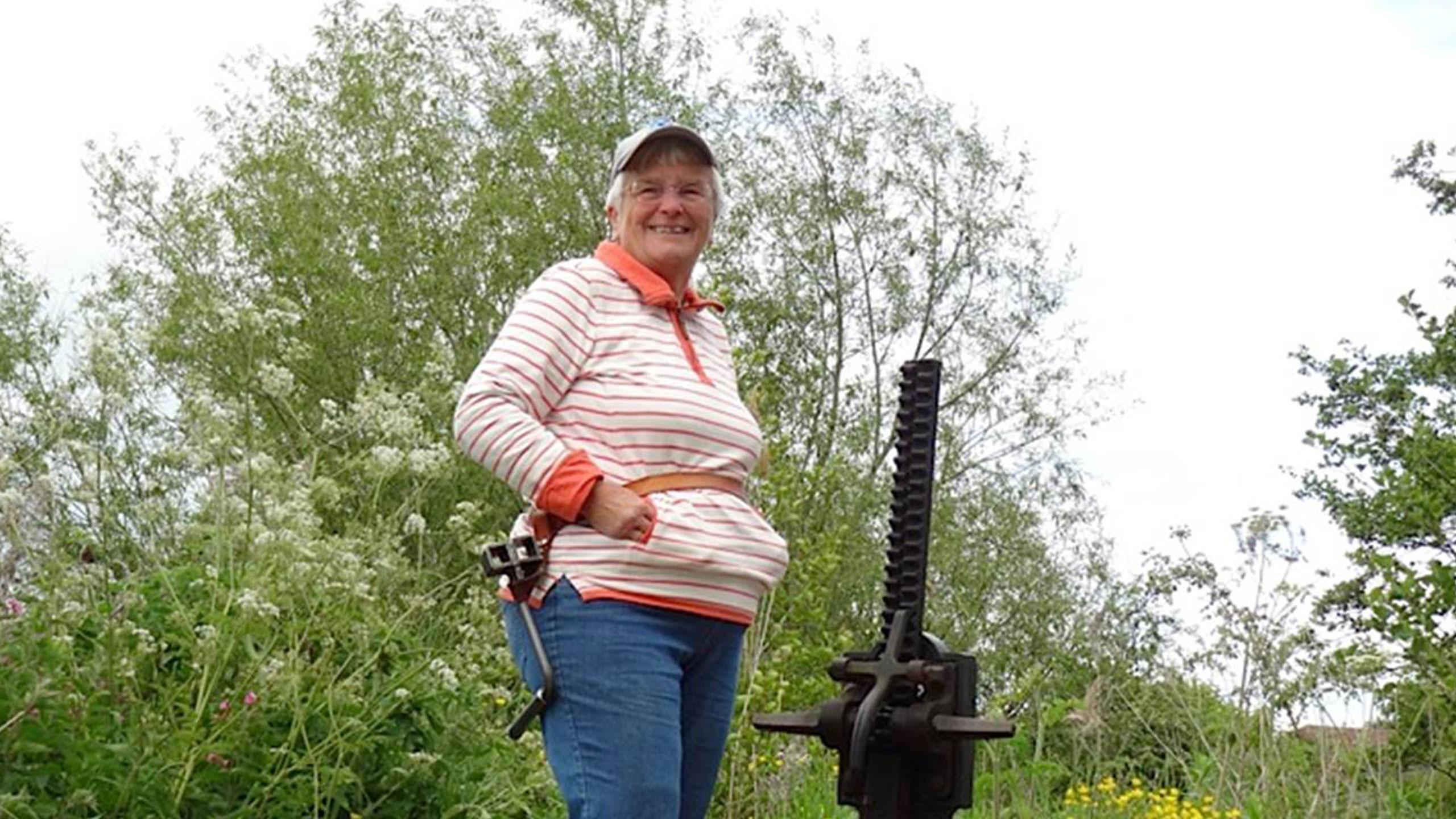
Joining IWA South Wales Branch
I joined the IWA South Wales Branch when we moved permanently to South Wales, and became chair in 2010. My aim was to make the South Wales canals better known, especially those in the Neath and Swansea valleys where there are myriad smaller canals, including an underground one.
When I stood down, about five years ago, I got involved with the Neath & Tennant Canals Trust. My first involvement with the Neath Canal was when, as IWA chair, we set up a meeting with representatives of the canal company. We were concerned the canal was not being properly managed and, in particular, we wanted to see more facilities for boaters. Sadly negotiations seem to have come to a full stop, with Canal & River Trust wanting a large dowry to take it on and the canal company not wanting to pay it. The canal is becoming neglected; where we had 27 boats for the Trailboat Festival in 2011, it is now so overgrown that a canoe would have difficulty getting through.
CAMPAIGNING TO SAVE Aberdulais Aqueduct
The trust is currently campaigning to save Aberdulais Aqueduct. There have been attempts over the years to restore the structure, including feasibility studies in 2009 and 2012, but none has been followed through. Flooding in February 2020, and especially the suggestion that the aqueduct should be destroyed, has given us the impetus to campaign more urgently for its repair and restoration. Last year we were in contact with Bwrdd Cymru, CRT’s board in Wales, Neath Council and IWA. The latter has written to CADW, the Welsh equivalent of English Heritage, National Resources Wales, Neath Council, the aqueduct’s owners and the local Assembly member. Depending on the responses we get, we will take the campaign further this year, involving local heritage groups and councillors. In the meantime we hope there will be no further damage to the aqueduct over the winter.
In terms of recruiting more women to the restoration sector, I think it’s a case of better promoting the female participants we already have. There are so many strong women involved with waterways. Let’s champion them more.

